New Fossils Suggest That Spinosaurus Was Fully Aquatic, Meaning We Have To Re-imagine This Bigger-than-T.

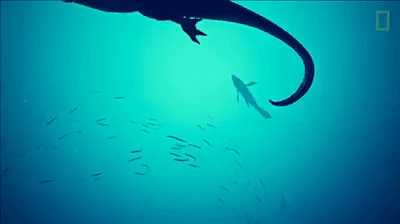
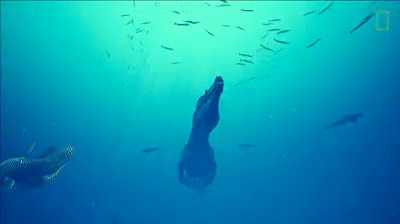
New fossils suggest that spinosaurus was fully aquatic, meaning we have to re-imagine this bigger-than-T. Rex dino’s looks and behavior. Video and article from National Geographic.
More Posts from Theperpetualscholar and Others










Climate Change


Chinstrap penguin (Pygoscelis antarcticus)
The chinstrap penguin is a species of penguin that inhabits a variety of islands and shores in the Southern Pacific and the Antarctic Oceans. Its name stems from the narrow black band under its head, which makes it appear as if it were wearing a black helmet, making it easy to identify. The chinstrap penguin grows to a length of 68–76 cm and a weight of 3.2–5.3 kg, with the weight varying with the time of year. Males are greater in weight and height than females. The diet of the chinstrap penguin consists of small fish, krill, shrimp, and squid, for which they swim up to 80 km offshore each day to obtain. The chinstrap penguin’s tightly packed feathers provide a waterproof coat, enabling it to swim in freezing waters. Additionally, thick blubber deposits and intricate blood vessels in the flippers and legs assist in the preservation of heat.
photo credits: Godot13, US National Oceanic and Atmospheric Administration

NCLEX Pharmacology Medical Suffixes
-amil = calcium channel blockers
-caine = local anesthetics
-dine = anti-ulcer agents (H2 histamine blockers)
-done = opioid analgesics
-ide = oral hypoglycemics
-lam = anti-anxiety agents
-oxacin = broad spectrum antibiotics
-micin = antibiotics
-mide = diuretics
-mycin = antibiotics
-nuim = neuromuscular blockers
-olol = beta blockers
-pam = anti-anxiety agents
-pine = calcium channel blockers
-pril = ace inhibitors
-sone = steroids
-statin =antihyperlipidemics
-vir = anti-virais
-zide = diuretics










The Arrival of Summer (Grand Indoor Gardens)
1. The University of Dundee Botanic Garden, Dundee, Scotland
2. Yumenoshima Tropical Greenhouse, Tokyo Japan
3. Oman Botanical Gardens, Oman
4. David Welch Winter Garden, Duthie Park in Aberdeen, Scotland
5. Castle Ashby Orangery, Northamptonshire, England, UK
6. Royal Botanical Gardens, London, England
7. Sherman Library and Gardens, Corona Del Mar, Newport Beach, California
8. Ny Carlsberg Glyptoteket, Copenhagen,Denmark
9. Atocha Station, Madrid, Spain
10. Siam Hotel, Bangkok, Thailand
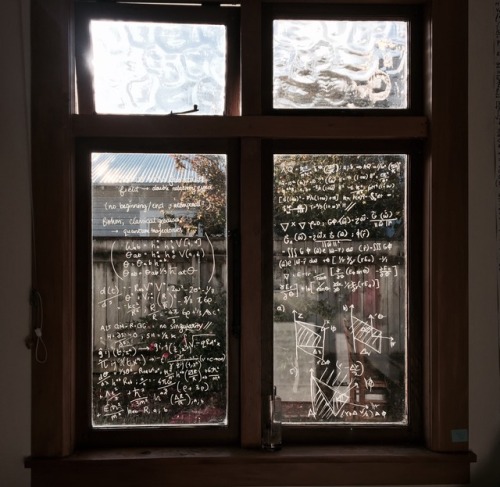
13.05.17 // Updated my physics window for the first time in ages! Had some thoughts over the past few weeks surrounding a free scalar field universe model so I drew them up as well as some old game theory because I watched a Beautiful Mind and felt nostalgic. I hope you are all having wonderful days / evening / whatever plane of existentialism you currently observe 😉
The First Newspaper
This one goes to the Romans! They had “Acta Diurna” (Daily Events) which was a handwritten news report, posted in multiple public places for the public to read. It first appeared in 131 BCE during the Republic. Although initially only the outcomes of trials, the Acta Diurna eventually expanded to public notices and announcements like important births or senatorial decrees.


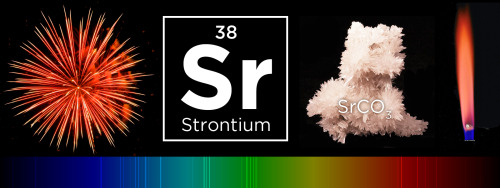
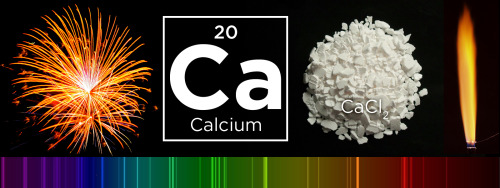
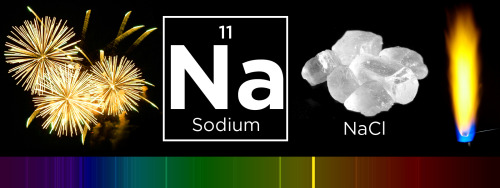
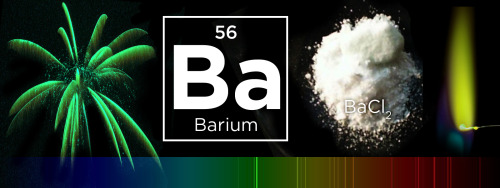
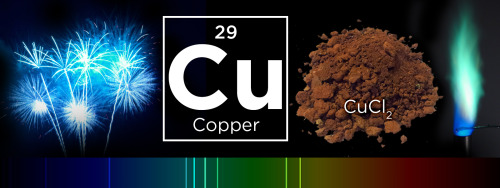
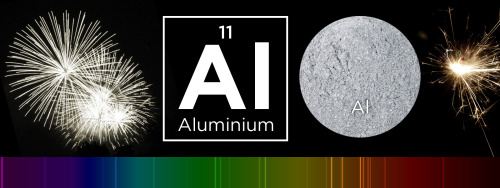
What makes fireworks colorful?
It’s all thanks to the luminescence of metals. When certain metals are heated (over a flame or in a hot explosion) their electrons jump up to a higher energy state. When those electrons fall back down, they emit specific frequencies of light - and each chemical has a unique emission spectrum.
You can see that the most prominent bands in the spectra above match the firework colors. The colors often burn brighter with the addition of an electron donor like Chlorine (Cl).
But the metals alone wouldn’t look like much. They need to be excited. Black powder (mostly nitrates like KNO3) provides oxygen for the rapid reduction of charcoal © to create a lot hot expanding gas - the BOOM. That, in turn, provides the energy for luminescence - the AWWWW.
Aluminium has a special role — it emits a bright white light … and makes sparks!
Images: Charles D. Winters, Andrew Lambert Photography / Science Source, iStockphoto, Epic Fireworks, Softyx, Mark Schellhase, Walkerma, Firetwister, Rob Lavinsky, iRocks.com, Søren Wedel Nielsen
-
 mirror-kind liked this · 2 weeks ago
mirror-kind liked this · 2 weeks ago -
 bubble--rings liked this · 2 months ago
bubble--rings liked this · 2 months ago -
 backspaceshipdriver liked this · 3 months ago
backspaceshipdriver liked this · 3 months ago -
 clumsycapitolunicorn liked this · 3 months ago
clumsycapitolunicorn liked this · 3 months ago -
 cyanideespresso reblogged this · 3 months ago
cyanideespresso reblogged this · 3 months ago -
 in-a-galaxy-far-far-a-gay liked this · 3 months ago
in-a-galaxy-far-far-a-gay liked this · 3 months ago -
 lilietsblog liked this · 3 months ago
lilietsblog liked this · 3 months ago -
 malapertmarquess liked this · 3 months ago
malapertmarquess liked this · 3 months ago -
 not-mrs-cake reblogged this · 3 months ago
not-mrs-cake reblogged this · 3 months ago -
 ancient-anteater liked this · 3 months ago
ancient-anteater liked this · 3 months ago -
 eintheology liked this · 3 months ago
eintheology liked this · 3 months ago -
 variastrix liked this · 3 months ago
variastrix liked this · 3 months ago -
 periwinklecurtains reblogged this · 3 months ago
periwinklecurtains reblogged this · 3 months ago -
 rictic liked this · 3 months ago
rictic liked this · 3 months ago -
 and-so-on liked this · 3 months ago
and-so-on liked this · 3 months ago -
 dissasociating-insomniac reblogged this · 3 months ago
dissasociating-insomniac reblogged this · 3 months ago -
 dissasociating-insomniac liked this · 3 months ago
dissasociating-insomniac liked this · 3 months ago -
 lyannnar reblogged this · 3 months ago
lyannnar reblogged this · 3 months ago -
 abibeur liked this · 3 months ago
abibeur liked this · 3 months ago -
 oran-rief liked this · 3 months ago
oran-rief liked this · 3 months ago -
 courgowr liked this · 3 months ago
courgowr liked this · 3 months ago -
 we-are-siphonophore reblogged this · 3 months ago
we-are-siphonophore reblogged this · 3 months ago -
 we-are-siphonophore liked this · 3 months ago
we-are-siphonophore liked this · 3 months ago -
 detective-horse-girl liked this · 3 months ago
detective-horse-girl liked this · 3 months ago -
 idiot-dummy liked this · 3 months ago
idiot-dummy liked this · 3 months ago -
 gelledegg liked this · 3 months ago
gelledegg liked this · 3 months ago -
 leonthetransboi liked this · 3 months ago
leonthetransboi liked this · 3 months ago -
 modularnra40 reblogged this · 3 months ago
modularnra40 reblogged this · 3 months ago -
 modularnra40 liked this · 3 months ago
modularnra40 liked this · 3 months ago -
 r2b2grady liked this · 3 months ago
r2b2grady liked this · 3 months ago -
 foggytiredwombat reblogged this · 3 months ago
foggytiredwombat reblogged this · 3 months ago -
 foggytiredwombat liked this · 3 months ago
foggytiredwombat liked this · 3 months ago -
 pisceanofinterest reblogged this · 3 months ago
pisceanofinterest reblogged this · 3 months ago -
 z-a-d-i-e liked this · 3 months ago
z-a-d-i-e liked this · 3 months ago -
 drzanko reblogged this · 3 months ago
drzanko reblogged this · 3 months ago -
 aspenspeaks reblogged this · 3 months ago
aspenspeaks reblogged this · 3 months ago -
 aspenspeaks liked this · 3 months ago
aspenspeaks liked this · 3 months ago -
 the-nerdy-autist liked this · 3 months ago
the-nerdy-autist liked this · 3 months ago -
 alefeelsmoody liked this · 3 months ago
alefeelsmoody liked this · 3 months ago -
 kitsunespell reblogged this · 3 months ago
kitsunespell reblogged this · 3 months ago -
 kitsunespell liked this · 3 months ago
kitsunespell liked this · 3 months ago -
 theswaggot reblogged this · 3 months ago
theswaggot reblogged this · 3 months ago -
 argumate reblogged this · 3 months ago
argumate reblogged this · 3 months ago -
 call-me-schmidt liked this · 3 months ago
call-me-schmidt liked this · 3 months ago -
 alphawerewolfassassingirl liked this · 6 months ago
alphawerewolfassassingirl liked this · 6 months ago -
 morticia-butler reblogged this · 7 months ago
morticia-butler reblogged this · 7 months ago -
 rainbowracer95 liked this · 10 months ago
rainbowracer95 liked this · 10 months ago -
 fggryhjrfht-blog liked this · 11 months ago
fggryhjrfht-blog liked this · 11 months ago


